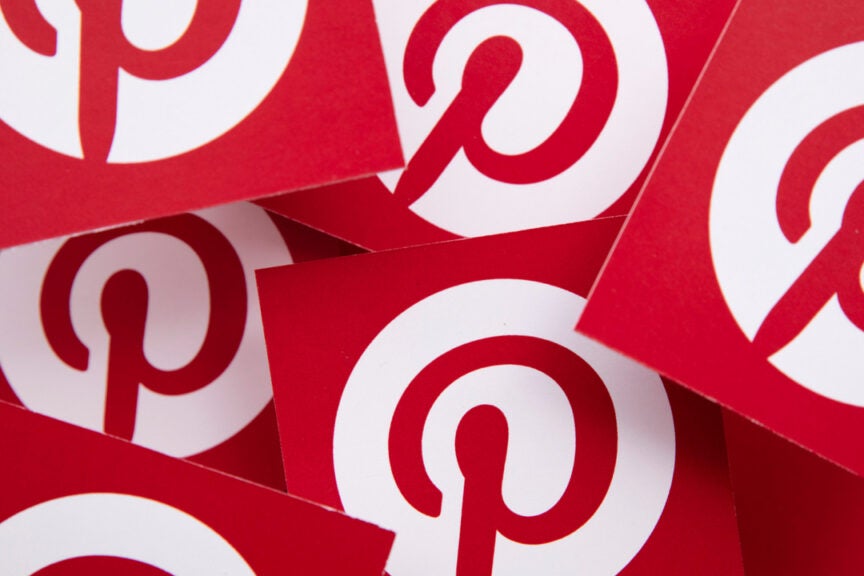Pinterest’s AI ‘Taste Graph’ Sees Unprecedented Growth
As Pinterest’s AI ‘Taste Graph’ experiences an extraordinary 75% expansion, the implications for competitors like Meta Platforms are profound. This development comes at a pivotal time for Meta, which recently celebrated its first-ever $1 billion revenue quarter. The competitive landscape in the social media and digital advertising space is shifting dramatically, and understanding these changes is crucial for businesses and marketers alike.
Understanding Pinterest’s AI ‘Taste Graph’
The ‘Taste Graph’ is Pinterest’s innovative machine learning tool that analyzes user preferences to enhance content discovery. By mapping out the interests and behaviors of its users, Pinterest can provide highly personalized recommendations, making it easier for users to find content that resonates with them. This sophisticated algorithm not only improves user satisfaction but also increases engagement on the platform.
With a 75% expansion in its capabilities, the ‘Taste Graph’ is now better equipped to analyze vast amounts of data, drawing insights from user interactions, searches, and saved pins. This evolution allows Pinterest to refine its understanding of trends and preferences, enabling brands to target their audiences more effectively.
The Benefits of the ‘Taste Graph’
- Enhanced User Experience: As the ‘Taste Graph’ grows, users gain access to more relevant content, creating a more engaging experience.
- Improved Targeting for Advertisers: Brands can leverage the insights generated by the ‘Taste Graph’ to tailor their advertising strategies to specific audience segments.
- Increased Engagement: Personalized recommendations lead to higher interaction rates, benefiting both users and advertisers.
This expansion not only solidifies Pinterest’s position as a leader in visual discovery but also poses a significant challenge to competitors, particularly Meta, which has traditionally dominated the social media space.
Meta’s Response to Competitive Challenges
Meta Platforms, the parent company of Facebook and Instagram, has been under pressure to innovate and retain its user base amid rising competition. With the company’s recent milestone of achieving $1 billion in revenue for the first time, there’s a clear indication that Meta is finding ways to monetize its platform effectively. However, the success of Pinterest’s ‘Taste Graph’ raises questions about how Meta can respond to this growing challenge.
Strategies for Meta to Compete
- Investing in AI: To counter Pinterest’s advancements, Meta could invest more in AI technologies that enhance user experience and content discovery.
- Leveraging User Data: By utilizing their vast databases, Meta could refine their algorithms to better understand user preferences and behaviors.
- Creating Unique Features: Meta might consider developing features that directly compete with Pinterest’s offerings, such as improved visual search capabilities or personalized content feeds.
These strategies will be crucial for Meta to maintain its relevance and continue attracting advertisers who are increasingly drawn to Pinterest’s innovative approach.
The Broader Implications for Digital Marketing
The rise of Pinterest’s ‘Taste Graph’ not only affects the competitive dynamics between Pinterest and Meta but also has broader implications for the digital marketing landscape. Advertisers must now navigate a more complex environment where user experience and personalization are paramount.
Key Takeaways for Marketers
- Prioritize Personalization: As platforms like Pinterest enhance their personalization capabilities, marketers must adopt similar strategies to connect with their audiences effectively.
- Embrace Visual Content: The popularity of Pinterest highlights the importance of visual content in engaging users. Brands should consider investing in high-quality imagery and video content.
- Stay Agile: The rapid evolution of platforms necessitates that marketers remain adaptable and responsive to changes in user preferences and technological advancements.
Marketers who recognize these shifts and adapt their strategies accordingly will likely find greater success in reaching their target audiences.
The Future of Pinterest and Meta
As Pinterest continues to expand its ‘Taste Graph’ capabilities, the platform is poised for significant growth. This expansion not only enhances user engagement but also positions Pinterest as a formidable player in the digital advertising space. On the other hand, Meta’s recent revenue milestone indicates that the company is taking steps to evolve its business model in response to these competitive pressures.
Potential Outcomes
- Increased Competition: The rivalry between Pinterest and Meta could lead to rapid innovations in features and advertising options, ultimately benefiting users and advertisers alike.
- Shift in Advertising Spend: As brands recognize Pinterest’s unique value proposition, we may see a shift in advertising budgets toward platforms that prioritize personalization and user engagement.
- Collaboration Possibilities: In a landscape where competition is fierce, there may also be opportunities for partnerships or collaborations that leverage the strengths of both platforms.
The future for both Pinterest and Meta is filled with potential, but it will largely depend on how they navigate this evolving landscape and respond to the needs of their users and advertisers.
Conclusion
In conclusion, Pinterest’s AI ‘Taste Graph’ is not just a technological advancement; it’s a game-changer in the digital marketing realm. As the platform expands its capabilities, competitors like Meta must adapt or risk losing their competitive edge. The implications for marketers are clear: prioritizing personalization and embracing visual content will be critical in the new landscape of digital advertising. With the competitive landscape shifting dramatically, the next few years promise to be transformative for both Pinterest and Meta, and those who stay ahead of the curve will reap the benefits.
See more Future Tech Daily

